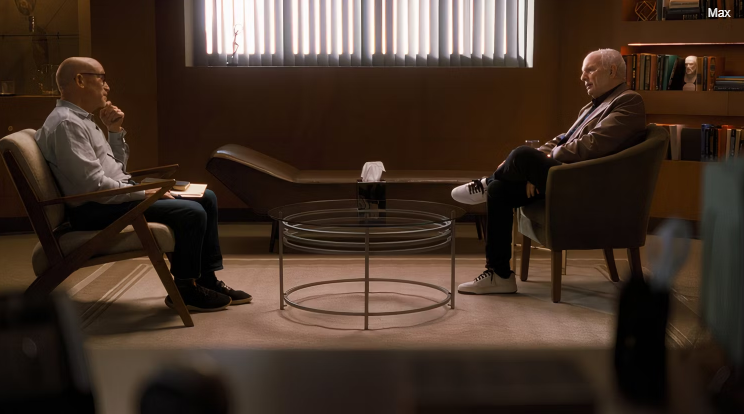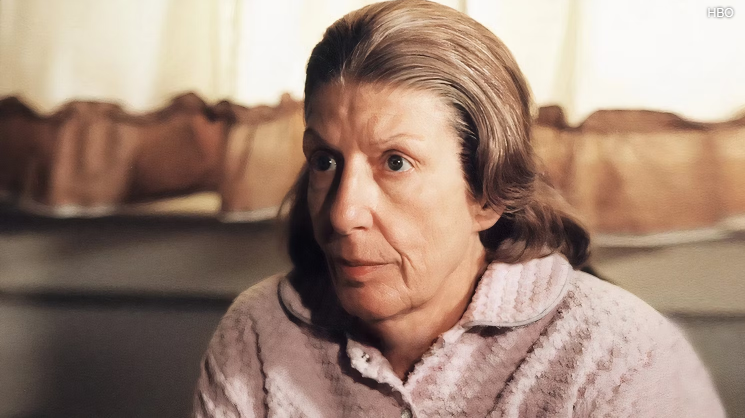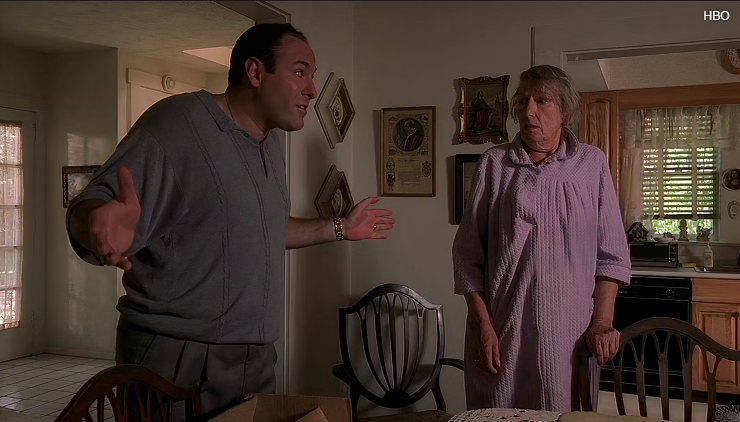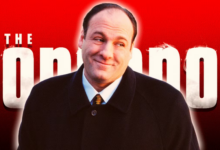The Biggest Revelations from Wise Guy: David Chase and the Sopranos

A landmark drama that changed the television landscape for generations, The Sopranos celebrates its 25th anniversary in 2024. To honor the occasion, HBO has produced a two-part documentary directed by Alex Gibney entitled Wise Guy: David Chase and The Sopranos. The first part covers the cultural impact of the hit mob drama and how the show altered television for the better, turning HBO into a small-screen power player. The second part focuses on Chase’s upbringing, personal and professional aspirations, and what inspired him to tell a New Jersery-set mafia story.
For hardcore Sopranos fans, the documentary might not be as insightful as they’d hoped, as much of the information relayed has long been public knowledge. However, casual fans will come away with several fascinating tidbits and cool trivial factoids that may answer long-held questions and concerns regarding Tony Soprano and his family. From Chase’s own mother issues to James Gandolfini’s struggles portraying Tony Soprano and more, the biggest revelations from Wise Guy deserve closer attention.
David Chase Was More Like Tony Soprano Than He Let On

In Wise Guy, Sopranos creator, show-runner, and head-writer David Chase is interviewed one-on-one by Oscar-winning documentary filmmaker Alex Gibney. In a fun format that recreates Dr. Melfi’s (Lorraine Bracco) psychiatry office, the documentary is presented as if it’s a therapy session for Chase conducted by Gibney. Chase, a dour and introspective Italian New Jersey native, feels tricked, thinking the documentary is about The Sopranos the show, not himself. Indeed, the two-part documentary first chronicles Chase’s upbringing and writing resume before exploring trivial details about the show.
The first major revelation is that Chase is much more like the eminently quotable Tony Soprano than he lets on. The basic premise about a mobster seeking therapy due to a crisis of conscience derives from Chase’s own time in treatment. According to Chase, Dr. Jennifer Melfi was modeled after a psychiatrist he was then seeing. Unbeknownst to Chase then, he sought to “re-mother” himself through his female therapist, which Tony does on the show.
Livia Was Based on Chase’s Mother

While writers Frank Renzulli and Terence Winter claim Tony’s mother, Livia, is an amalgam of all the writer’s mothers combined, Chase maintains that Livia was patterned after his real-life mother. Just as Livia called therapy a racket in the show, so too did Chase’s mother in reality. “My mother was nuts,” says Chase, noting how none of the hundreds of actors who auditioned for the role came close to the authenticity the late Nancy Marchand gave.
Apart from having a verbally abusive mother and attending therapy to deal with it, Chase’s cruel countenance also paralleled Tony Soprano’s. Renzulli left after Season 2 because he was unhappy with Chase’s dour demeanor. Meanwhile, Robin Greene was fired from the writer’s room for interrupting Chase too often. According to star Edie Falco, Chase was referred to as the “Master Cylinder” by the actors and crewmembers, who would often wait to hear if Chase approved a single word or line of dialog before proceeding.
Chase also reveals that, in the original script, Tony was going to suffocate Livia with a pillow at the hospital. Livia’s death was moved to the Season 1 finale, but Nancy Marchand became ill with cancer and pleaded with Chase to allow her to continue working. Chase honored the request, and Marchand remained until her demise following Season 2.
Chase Originally Wanted Robert De Niro & Anne Bancroft

While it’s no secret that The Sopranos originated as a potential feature film, Chase admitted that he originally wanted Robert De Niro to play Tony Soprano and Anne Bancroft to play his mother, Livia. Of course, De Niro was already committed to Analyze This, a comedy about a mobster in therapy released the same year as The Sopranos. Before James Gandolfini was cast as Tony, Chase offered the role to Stevie Van Zandt, an acting tyro known for being Bruce Springsteen’s guitarist. HBO balked at the idea and Chase specifically wrote the part of Silvio Dante for Van Zandt instead.
Several other actors who ended up in the show also auditioned for Tony Soprano, including Michael Rispoli, John Ventimiglia, David Proval, and others. However, once Gandolfini came, it was clear he was right for the role. Gandolfini left midway through his first audition, claiming that he messed up. He was invited to perform the scene at Chase’s house and nailed it. For an unknown character actor in movies to suddenly become a massive celebrity household name overnight was not easy for Gandolfini.
As for additional casting concerns, Chase initially wanted Bracco to play Carmela. However, Bracco insisted that she already played a mob wife in Goodfellas and insisted on playing Dr. Melfi instead. Bracco convinced Chase that Tony wouldn’t talk to a therapist unless they were Italian. He agreed and she won the role.
Gandolfini’s Struggles Took a Severe Toll

Another stunning revelation in the doc comes when Gibney asks Chase if he was shocked that James Gandolfini died at age 51 of a sudden heart attack. “No,” Chase utters with chilling brevity, hinting at years of off-screen struggles Gandolfini dealt with in the wake of The Soprano’s meteoric popularity. An intensely devoted performer who went above and beyond with his intense method acting, Gandolfini went to extremely dark places before cameras rolled.
To psych himself up before intense scenes, Gandolfini would do things like pound car seats, and genuinely injure himself. For instance, in the watershed episode “College,” Gandolfini made his hands bleed by strangling the victim so tightly with wire. The role became harder with each passing season, taking a severe psychological toll that led to drug and alcohol abuse. At one point, HBO executive Chris Albrecht arranged an intervention at his New York home for Gandolfini. When Gandolfini arrived and saw his cast and crewmates, he barked “Ah, f*ck this. Fire me!” and stormed out.
As the show became more popular, Gandolfini became more troubled. Yet, with a huge heart, Gandolfini always supported his fellow actors. When he was given a new contract and paid $1 million per episode, Gandolfini felt so guilty that he gave $30,000 of his own money to several cast members. The toll of playing Tony Soprano led to Gandolfini missing multiple shooting days, which delayed production and caused serious creative problems. Gandolfini’s truancy became so problematic that he was docked $100,000 for each missed shooting day.
The Pilot

Extra attention is given to The Sopranos pilot in Wise Guy. HBO thought long and hard about allowing Chase to direct the pilot despite significant directional experience in television. One of the biggest revelations is that HBO took 10 months to green-light the show after Chase delivered the pilot. Far from the prestige TV destination that it’s become, HBO was finding its footing in 1997 when the pilot was produced. It took a long deliberation for Albrecht and the other executives to trust Chase could helm the pilot episode.
In Wise Guy, Chase reveals that he modeled a chase scene in the pilot on a scene from Chinatown. The sequence in which Tony and Chris chase a man from his office is lifted from the orange orchard scene in Chinatown, where Jake Gittes is suddenly ambushed. Another tidbit about the pilot is that Bracco and Gandolfini rehearsed for three days before filming their intimate therapy scenes, which helped the two actors develop chemistry.
Funnily enough, when discussing the pilot, Chase mentions that Martin Scorsese, the preeminent mafia moviemaker, dislikes The Sopranos due to its serene New Jersey setting. Chase quotes Scorsese, saying, “I don’t get it; it’s all these trees and s***.” Of course, 27 Goodfellas actors appear in The Sopranos, forever connecting Chase with Scorsese.
While several other directors worked on the show throughout its run, Chase returned to direct the open-ended finale, which was discussed at length in Wiseguy.
The Controversial Sopranos Finale

The Sopranos notoriously ended its six-season run with an ambiguous, open ending that has sparked debate for years. Whether Tony is whacked by the man in the Member’s Only Jacket is beside the point. The point is that, even in a safe public place with his family present, Tony will always need to look over his shoulder and can never truly find peace in his line of work. In Wise Guy, the biggest revelation about that infamous cut-to-black is that Gandolfini had no clue how the show would end.
According to Bracco, she immediately called Gandolfini on the phone after the pilot aired on HBO. Gandolfini was shocked, saying “That’s how it ends?” The sentiment was shared by Bracco and the rest of the cast, who were just as stunned as ordinary viewers to see such an abrupt, unresolved conclusion. For the visual language featured in the finale, Chase and DP Alik Sakharov discussed the ending of 2001: A Space Odyssey, one of the most famous examples of an ambiguously open-ended conclusion. Just as Kubrick broke the movie mold in 2001, The Sopranos forever altered the landscape of dramatic television.






